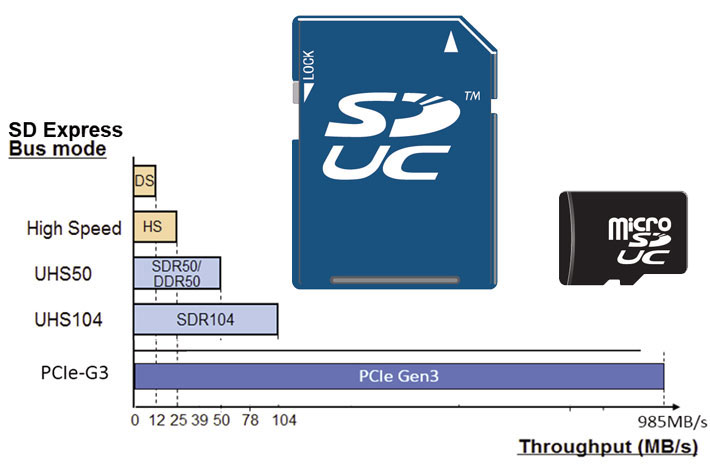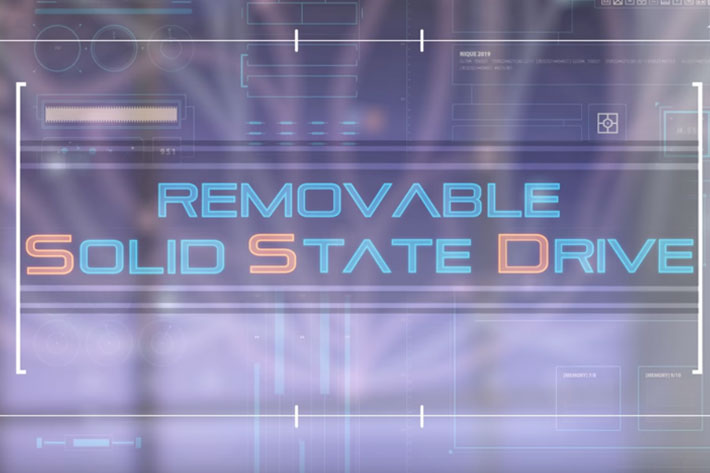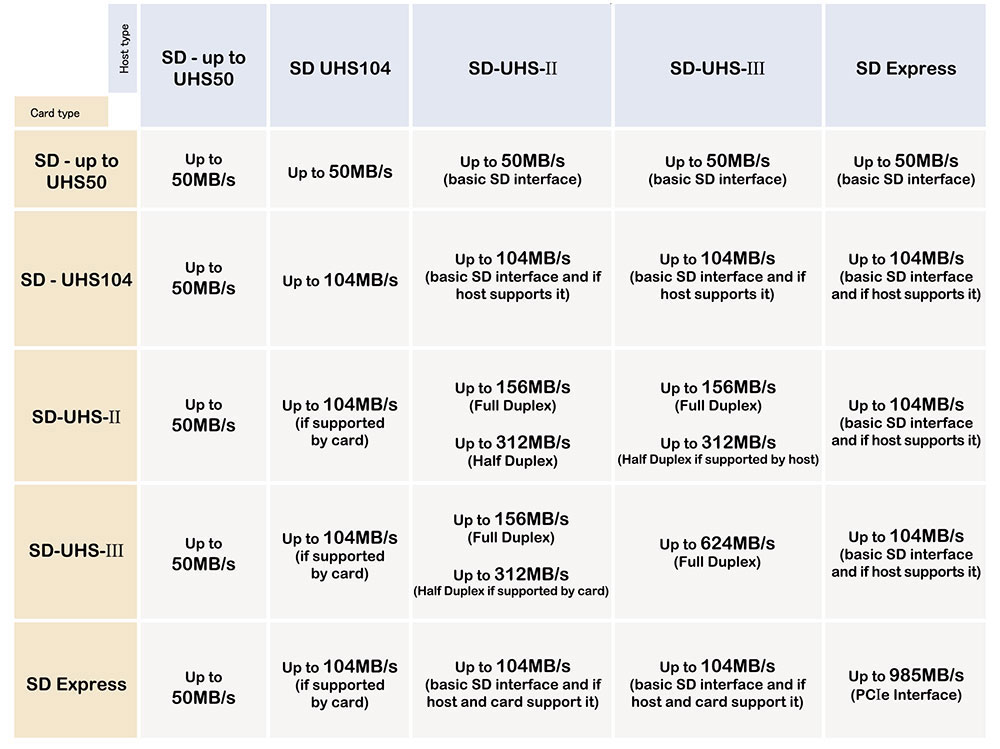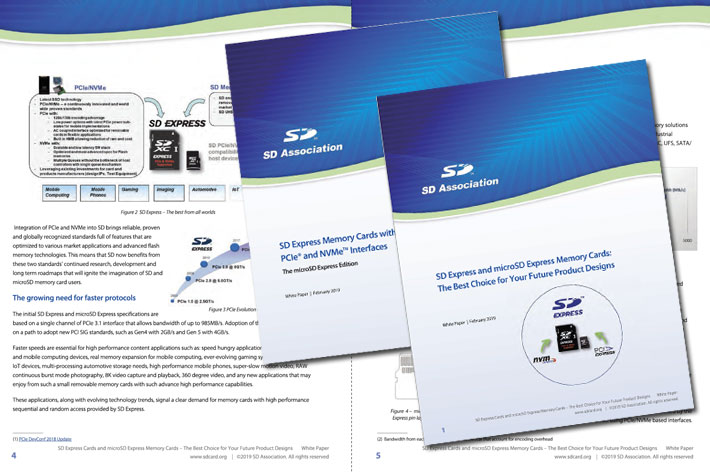
The SD Association talks about “removable SSDs” when referring to the microSD Express cards coming next, using the now popular PCIe 3.1 and NVMe v1.3 specifications, and being backwards compatible.
The SD Association announced at the MWC Barcelona (Mobile World Congress) the specifications for the new microSD Express, offering the popular PCI Express and NVMe interfaces alongside the legacy microSD interface for backwards compatibility.
 The move was expected, since the SD Association, at the Mobile World Congress held in Shanghai, June 2018, announced the next step of the evolution for SD cards. Then, it was revealed that the new SD Express would add the popular PCI Express and NVMe interfaces to the legacy SD interface. Now, the same technology moves microSD memory cards to a new level, under the name microSD Express.
The move was expected, since the SD Association, at the Mobile World Congress held in Shanghai, June 2018, announced the next step of the evolution for SD cards. Then, it was revealed that the new SD Express would add the popular PCI Express and NVMe interfaces to the legacy SD interface. Now, the same technology moves microSD memory cards to a new level, under the name microSD Express.
The president of the SD Association, Hiroyuki Sakamoto, said, then that “with SD Express we’re offering an entirely new level of memory card with faster protocols turning cards into a removable SSD” and the idea, which I expressed in the title of the article, “Do the new SD Express cards mean the end of SSDs ?” returns now, as the same Hiroyuki Sakamoto says this: “microSD Express gives the mobile industry a compelling new choice to equip mobile devices with removable SSDs” adding that “SD 7.1 prepares consumers and mobile device manufacturers to meet ever increasing storage demands for years to come.”
microSD Express will come in different capacities
Like SD Express, microSD Express uses the PCIe interface delivering a 985 megabytes per second (MB/s) maximum data transfer rate and the NVMe upper layer protocol enables advanced memory access mechanism, enabling a new world of opportunities for mobile devices. If one adds the ever growing capacity of these cards to the small format, it is not hard to see how storage will change in the years to come. In fact, also at WMC Barcelona, Western Digital announced its new 1TB UHS-I microSD card, presented as the world’s fastest 1TB microSD card. For now…
As with SD Express, microSD Express cards defined in the SD 7.1 specification will be offered in a variety of capacities such as microSDHC Express, microSDXC Express and microSDUC Express. I wrote back in June that the SD Express is an ideal format for portable devices, but its new specifications make it also a viable solution for storage inside computers and other devices. With this announcement the SD Association reaffirms the idea that these memory cards are “removable SSDs”, something that may well become true if prices come down.
A card for high resolution video, VR and more
The new microSD Express delivers speeds necessary to transfer large amounts of information generated by data-intense wireless communication, speed hungry applications running on cards and mobile computing devices, ever evolving gaming systems, multi-channel IoT devices, numerous automotive uses, higher resolution mobile videos, action cameras , 360o videos, VR and more.
https://youtu.be/41VfO5AuuPI
The card uses the well-known PCIe 3.1 and NVMe v1.3 specifications defined by PCI-SIG and NVM Express, respectively, on the second row of pins. PCIe 3.1 includes the low power sub-states (L1.1, L1.2) enabling low power implementations of SD Express for the mobile market. In addition, SD Express cards with significantly higher speed data transfer rates are expected to consume less energy than traditional microSD memory cards while keeping the same maximum consumed power.
Two white papers published
The cards provide system developers new options offered by PCIe and NVMe capabilities, such as Bus Mastering, Multi Queue (without locking mechanism) and Host Memory Buffer. By relying on successful protocols already in the marketplace, the SDA gives the industry an advantage allowing utilization of existing test equipment and saving in development process by usage of existing building blocks used in existing designs.
The SD Association published a revised white paper, “SD Express Memory Cards with PCIe and NVMe Interfaces”, you may want to download to read more about new capabilities and features found in the SD 7.1 specification. It also introduced a new white paper “SD Express and microSD Express Memory Cards: The Best Choice for Your Future Product Designs” providing product engineers with an in-depth look at the opportunities now available.

Filmtools
Filmmakers go-to destination for pre-production, production & post production equipment!
Shop Now















